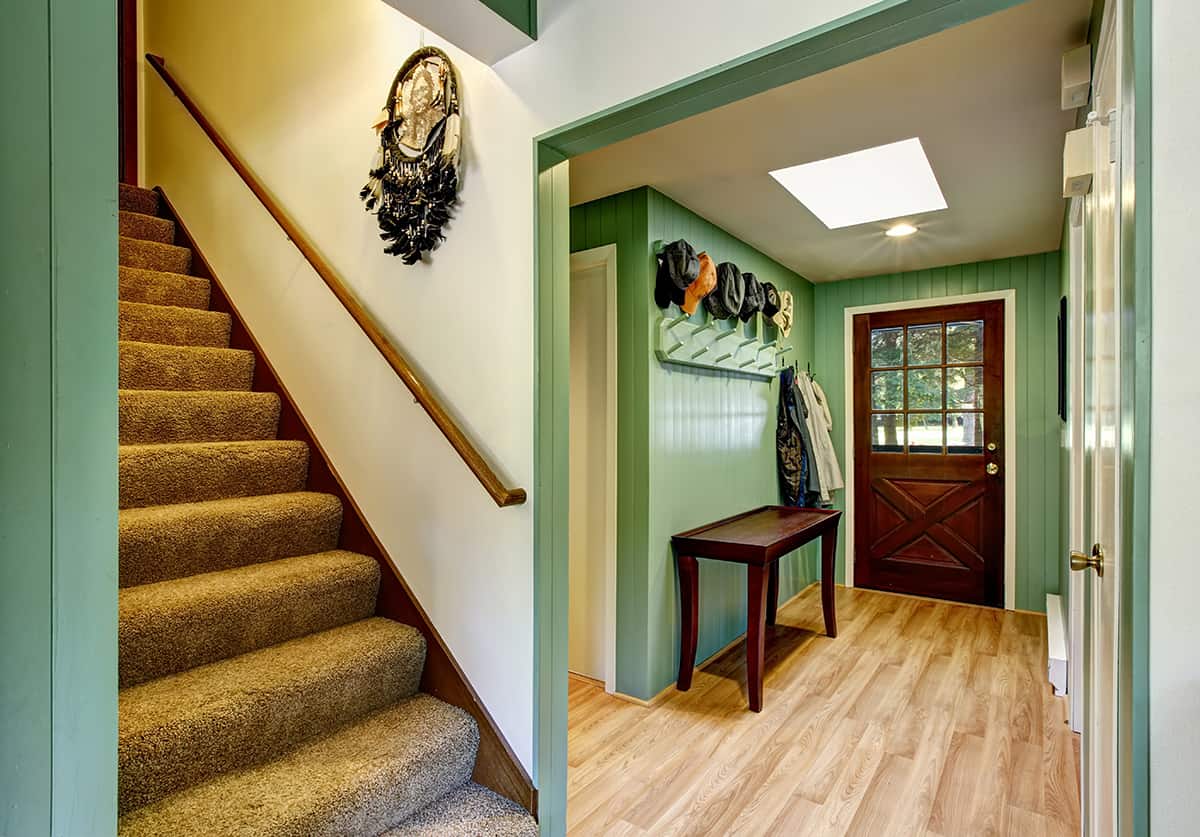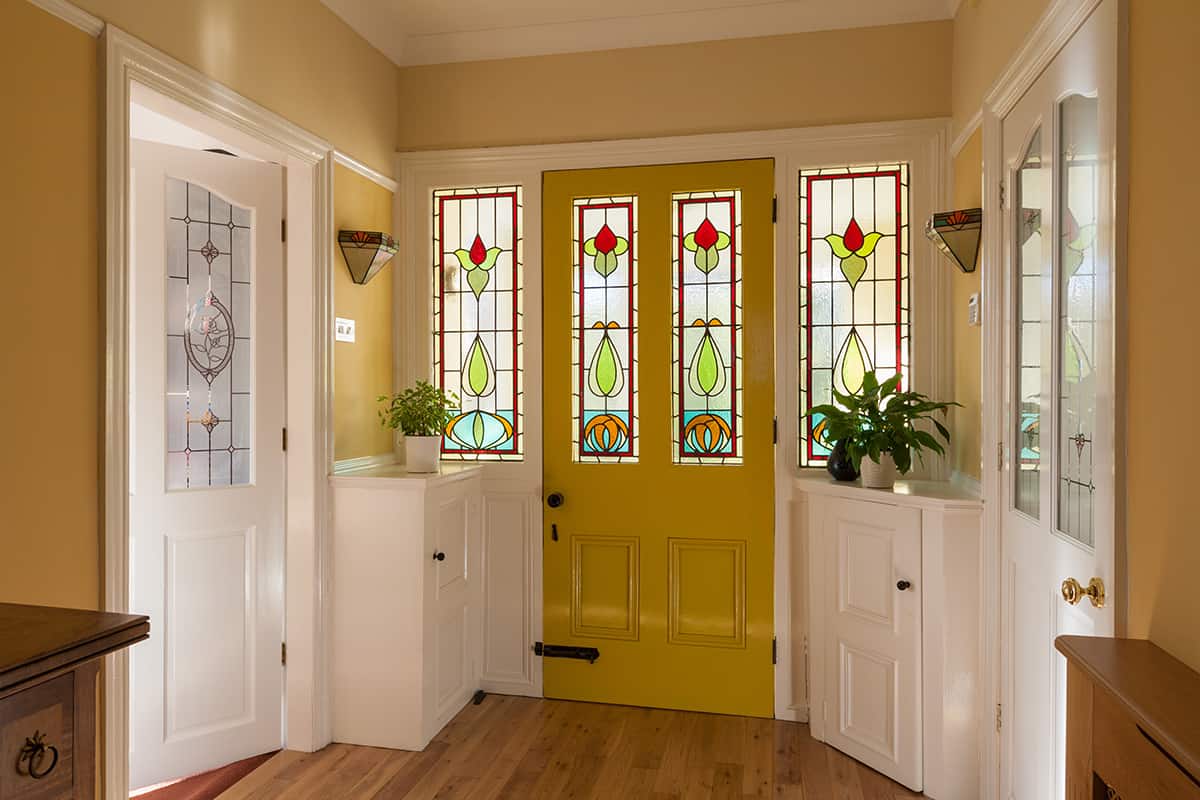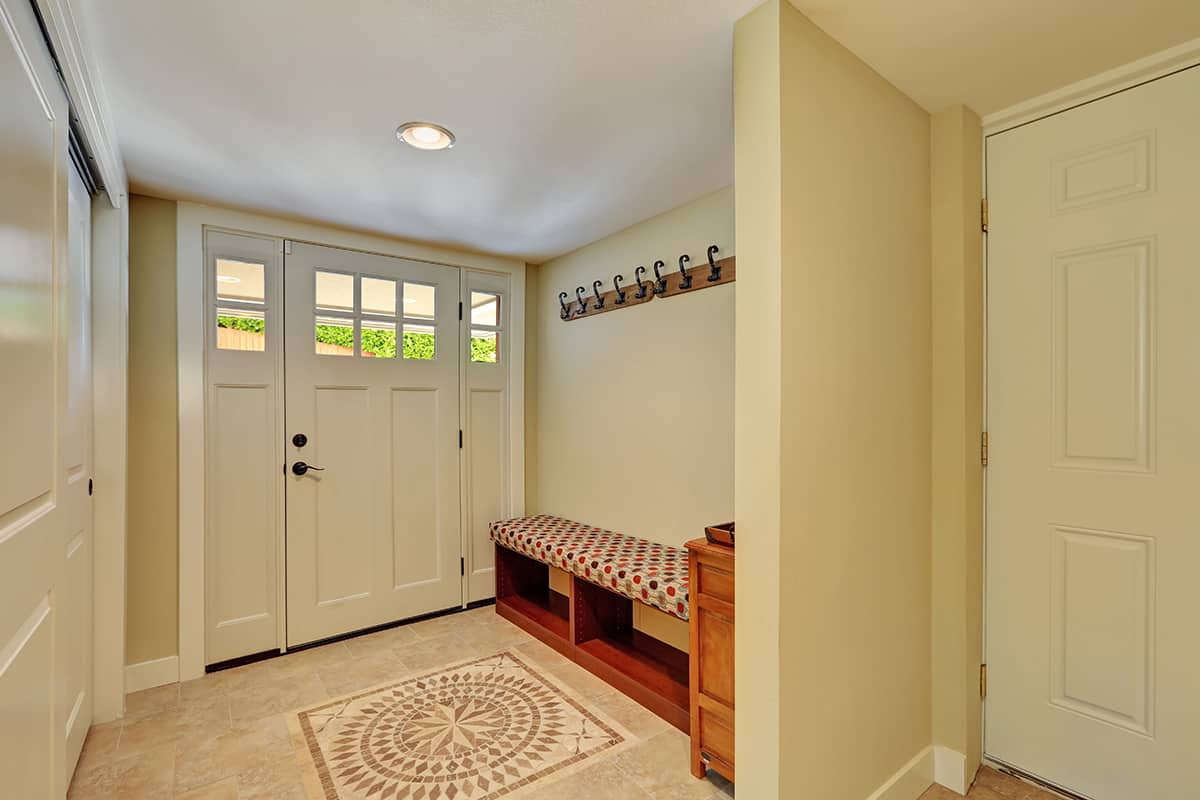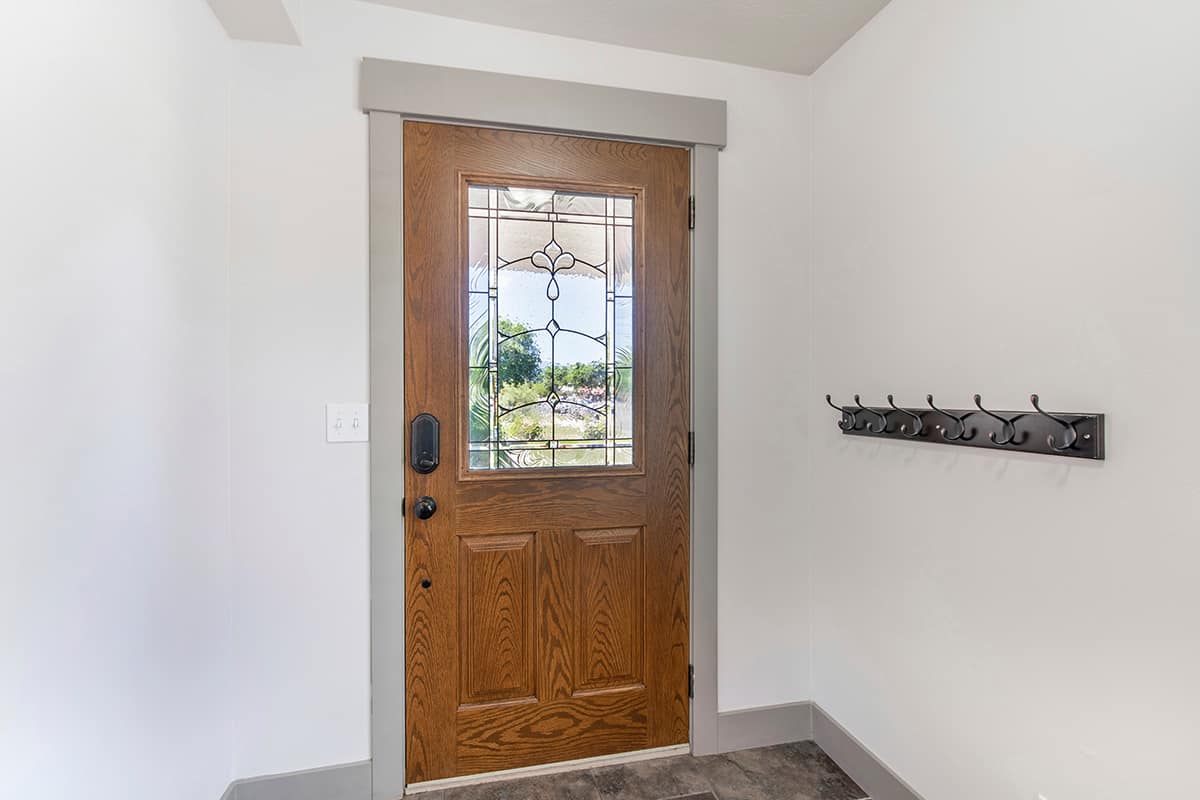Choosing the paint color for your front door can be a complex task. There is so much to think about, for example, whether the front door color will match the siding, whether it will clash with the neighbor’s house, or whether it will come across as too boring or too bold.
One of the things you probably haven’t considered when choosing a front door paint color is whether you are going to also use it on the inside of your front door.
This is a question that usually pops up once you have started painting the outside of the door, as you suddenly realize that the color may not match your indoor decor. Here we look at what colors are best for inside a front door.
Table of Contents
Should the Inside of a Front Door Match the Outside?
Painting the outside of your front door is a great way to express your personality to neighbors and visitors, as well as give people an indication about the kind of style they can expect on the interior of your home.
Exterior paint colors have come a long way in recent years, and as a result, many homeowners are deciding to be more daring when it comes to the color of their front doors, siding, and trim, and there has been a shift away from neutral or bland exterior color schemes.
As such, it is not uncommon to see front doors painted in bright shades of red, yellow, and blue, or dark forest green, burgundy, black, or even hot pink.
Front doors can look great in striking colors, especially when they are a contrasting or complementary shade to the rest of the home’s exterior. However, if you have painted the outside of your front door a bright color, you might be wondering what to do about the inside of the front door.
It seems to make sense that the whole door should be painted in the same color, but if your exterior front door is red, that doesn’t necessarily mean you want to have a bright red front door in your foyer or entryway.
In this scenario, it really comes down to personal choice and what you can live with. If the exterior of your front door is painted in a subtle or muted color, such as sage green, then this might be a color you can also paint on the inside of your front door and make it work with your entryway interior decor.
For brighter and bolder colors, such as lime green, you might feel this is too intense to have in your entryway. A front door that is painted in the same color on the front and back does create a seamless look and a sense of continuity, but it is not a big interior design faux pax to have different colored paint on each side of the door, so do what you are comfortable with.
If your front door is painted in a neutral color on the outside, such as pale gray, then it makes sense to continue this on the interior front door in order to keep things simple and consistent.
Should the Inside of a Front Door Match the Indoor Decor?
The inside of a front door doesn’t have to match the interior decor, but it should coordinate with it to an extent so that there isn’t a sense of disconnection.
If your front door is already painted in a color you like, but it doesn’t coordinate with the color scheme in your entryway, then you have the option of redesigning your entryway to work with the inner front door, or you could repaint the inside of the front door.
Many people choose to paint the inside of their front door in a neutral color such as white or cream because these colors will usually work with any entryway color scheme. This means that you can change the paint color in your entryway every few years if you wish, and you won’t need to continually repaint the inside of the front door to go with it.
If you have a fairly consistent style throughout the interior of your home, then you can paint the inside of your door to coordinate with this. For example, if you tend to lean towards a more coastal style in your home, then you could paint the inside of your front door navy blue.
Should the Inside of a Front Door Match the Trim?
If you want a classic look in your entryway, then the paint color on the inside of your front door should match the surrounding trim. This creates a more finished, well-put-together look, and it helps to make the door feel properly framed.
When the trim paint color is different from the door paint color, it can make the space look unbalanced or unfinished. This is particularly the case if the inner front door and trim are similar colors but not quite the same.
For example, if the trim in your house is white, and the inside of your front door is painted in cream, then it can look as though you simply forgot to update your trim. Or it could look as though your front door has faded or needs a good clean.
There are some instances where the trim can be a different color to the front door and still look good, but this will need to be very intentional. For example, your trim might be black, with white walls and white flooring and red photo frames hanging on the wall.
To bring this look together, you could paint the inside of your front door red, and this would look very stylish and deliberate. Mismatched trim and the inside of a door will not look stylish if the colors seem to have been haphazardly chosen or they don’t coordinate in any meaningful way.
Should the Inside of a Front Door be Painted Neutral?
Many people opt to paint the inside of their front door in a neutral color simply because it is the easiest option, but this certainly doesn’t have to be how you paint your own front door.
Since most types of front doors tend to be quite expensive to buy, they aren’t a part of the home that is regularly changed. Due to this, homeowners like to paint the inside of a front door in a neutral color because they know the door is going to be there for a long time, and neutral colors don’t tend to go out of style.
A neutrally painted inside the front door is going to be easier to match the interior decor, so you won’t need to repaint the front door every time you want to update the look of your entryway. It can make a lot of sense to paint the inside of a front door in a neutral color, but neutral doesn’t need to be boring.
When many people hear the word ‘neutral,’ they instantly think of beige or brown or dull, bland colors. However, there are many beautiful colors that fall into the category of neutral, such as charcoal gray or a dreamy off-white.
Many interior designers are now looking at more colorful shades as modern neutrals, such as pink, blue, and green. Green is considered to be nature’s neutral since it is a color that is seen in abundance in the natural world and, therefore, blends seamlessly into the background in the same way that neutrals do.
If you want a neutral color for the inside of your front door but don’t want a boring shade, then try out a muted shade of green, such as pale olive green or sage green. Dark shades of green can also read as neutrals if they are subdued enough, such as moss green or forest green.
Blue can also work as a neutral since it is another color widely found in nature, for example, the sky and the ocean. To use blue as a neutral color for the inside of your door, choose subtle shades such as pale blue-gray or navy. If you want to brighten up your entryway, then you can move away from neutrals entirely.
A minimalist white entryway could look stunning with a bright pop of color on the inside of the door, for example, using magenta paint or teal paint. The key to getting the right look in the room where your front door is positioned is ensuring that the color of the front door doesn’t clash with the rest of the decor in the space.
The paint color needs to connect with the room in some way. For example, you could paint the inside of the front door in the same color as you have painted the stair railings in the entryway or paint the door in the same color as the entryway light fitting. For a deeper sense of consistency and continuity, paint the inside of the front door in the same color as all of your interior doors.
Should You Paint the Front Doors the Same Colors Inside and Outside?
Deciding whether to paint your front door inside out is a question of personal preference and design continuity. Painting both sides the same color offers a cohesive look, seamlessly blending your home’s exterior appeal with its interior design.
This approach works particularly well if your home features an open-concept layout or if you wish to extend the welcoming charm of your exterior into your home. However, contrasting colors allow for more creative expression, enabling you to match the interior door color with your home’s inside palette while choosing an exterior color that complements your home’s façade.
Ultimately, the choice depends on the specific aesthetic you wish to achieve and how you want the front door to interact with both your home’s interior and exterior designs.



